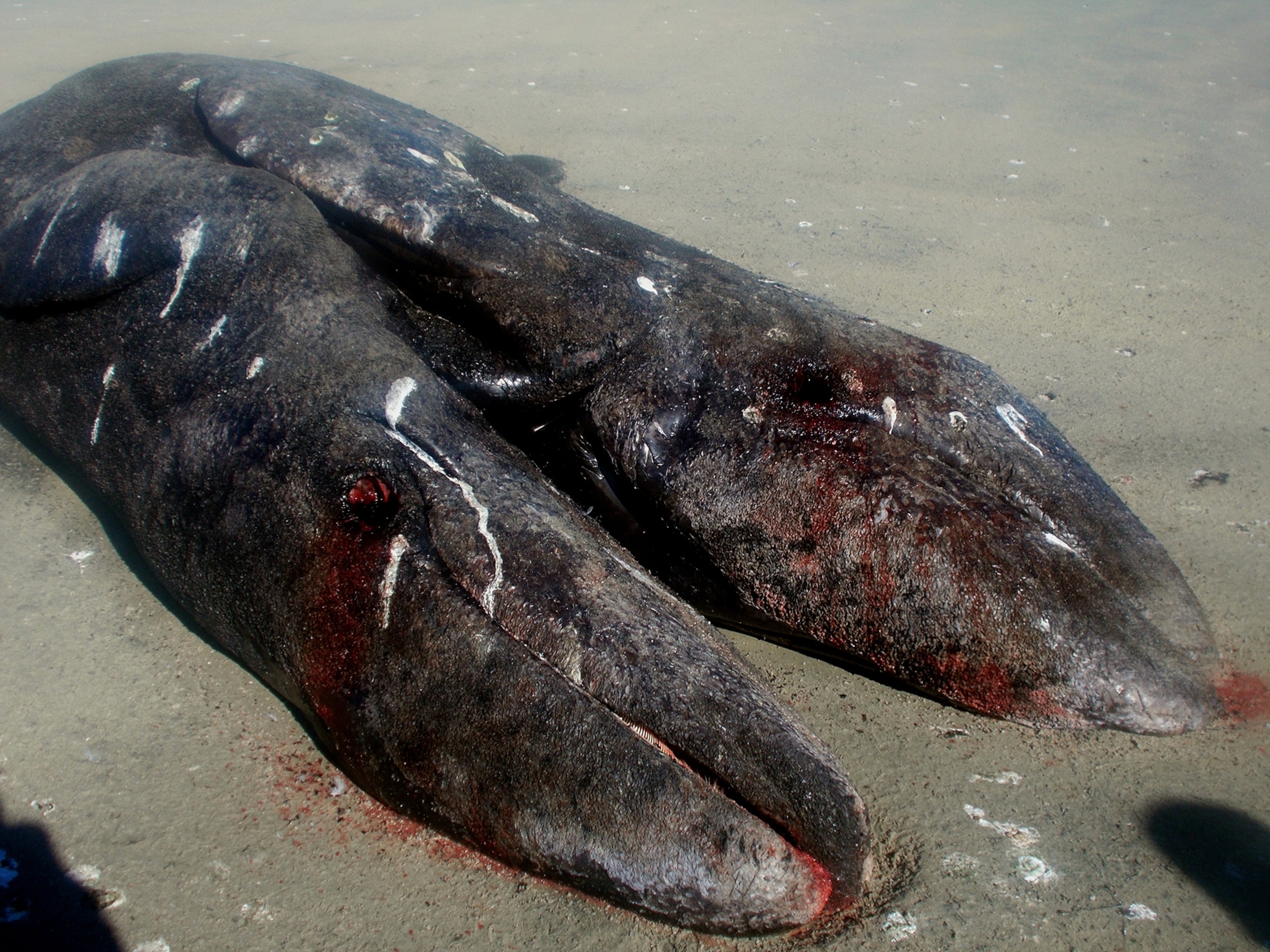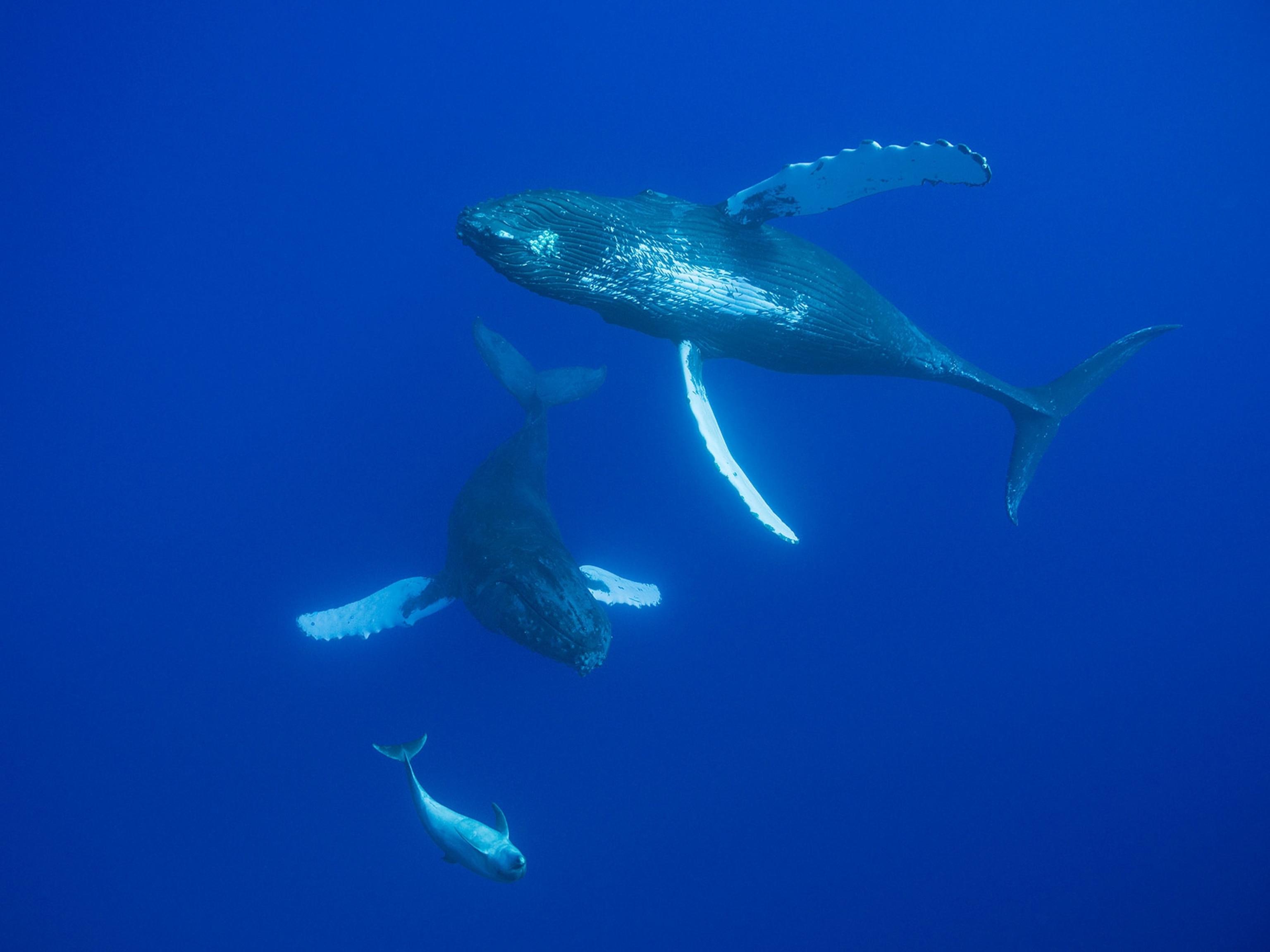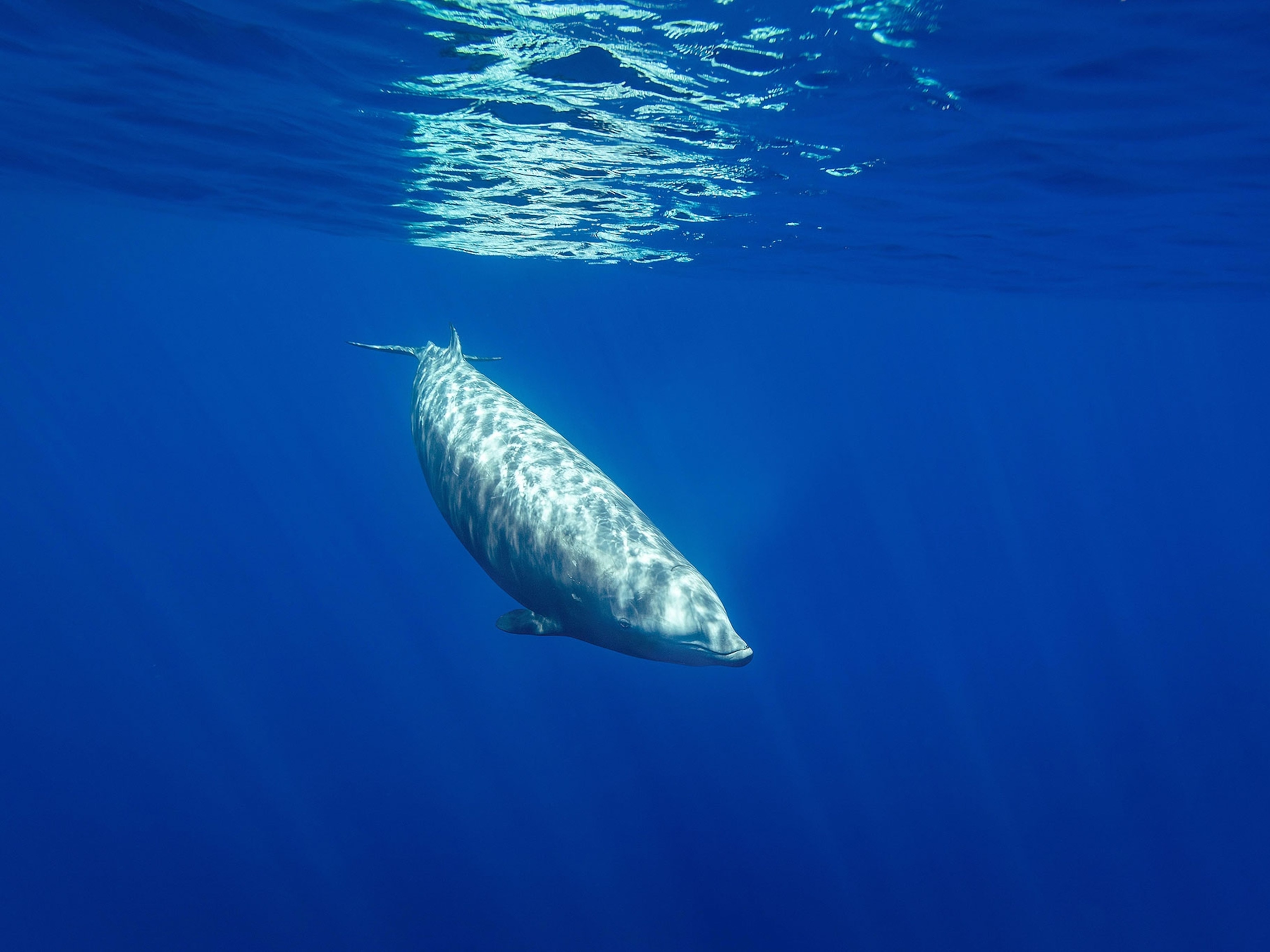
Rare Conjoined Gray Whale Calves Found in Lagoon—Could Be First for Species
Researchers found the aborted twins floating in a lagoon in Baja California on Sunday.
Scientists made an unexpected discovery on January 5 when they found the bodies of two conjoined gray whale calves (Eschrichtius robustus) floating in Laguna Ojo de Liebre (map) in Baja California.
The conjoined twins—also known as Siamese twins—measured about seven to ten feet (two to three meters) in length, according to several reports. That's shorter than the usual 12- to 16-foot (3.6- to 4.8-meter) length of full-term gray whale calves.
Gray whale gestation lasts for 13.5 months, said Jim Dines, collections manager of mammals at the Natural History Museum of Los Angeles County in California. So the conjoined twins were probably between 8.5 and 10.5 months of age when they were born, he noted.
Dines cautions that those ages are only estimates based on the lengths of single fetuses. "In the case of twins, the mother has to provide nourishment for two growing fetuses and that may result in two slightly smaller fetuses rather than one normal-sized one," he explained.
"These were pretty sizeable," Dines said. "There's a fair chance the mother was trying to deliver them and couldn't."
Researchers who made the find in Mexico didn't spot the mother, so it's unclear whether she survived or not.
A Rare Occurrence
"It's not unheard of in large whales to have Siamese twins," said Michael Moore, a veterinarian at the Woods Hole Oceanographic Institution in Massachusetts. He specializes in forensic analysis of marine mammal deaths.
A search through the scientific literature comes up with occurrences of conjoined twins in minke, sei, and humpback whales, he added.
"[But] because of their reproductive biology, whales and dolphins almost always have a single baby," said the Natural History Museum's Dines.
Whales have a pair of nipples, rather than the multiple sets seen in mammals like rodents, he explained. "Most mammals that have single births have just a pair of nipples."
It's also very difficult to raise one baby in an aquatic environment, let alone two, Dines added.
Even if conjoined whale calves managed to make it to full term, it's doubtful they would ever survive, he said. The calves would have to come to the surface to breathe, and depending on where they're joined, that might not be possible.
From photos of other conjoined whale calves Dines has seen, the twins are usually attached along their stomachs or backs, with their blowholes pointing out to the right or the left. "So it would make it impossible to breathe."
It's Not the Radiation
For folks concerned that these conjoined gray whale calves are a harbinger of the radiation making its way across the Pacific from the Fukushima power plant in Japan, don't worry. (See"True Facts About Ocean Radiation and the Fukushima Disaster.")
"In the past year or so, when we have marine mammals that strand here in California and we've had the tissues tested for radiation, there's nothing there," said Dines.
"I'm not going to say it's impossible," he said. "[But] we've looked and looked and looked, [and] we've seen zero evidence of radiation affecting cetaceans."
"Just because an animal like a whale has twins, doesn't mean it's been subjected to radiation," Dines said. "Humans have twins all the time."
Follow Jane J. Lee on Twitter.




